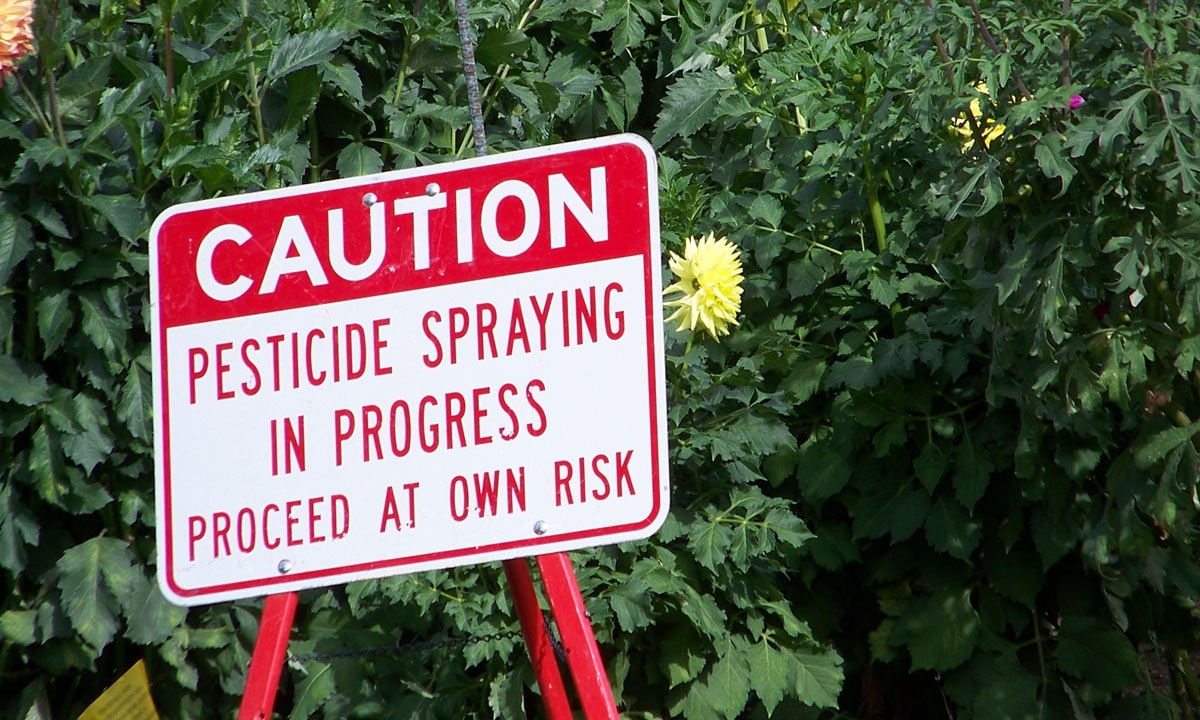Environmental regulations have not caught up yet with marijuana legalization reform.
By: Adrian Devitt-Lee

Such regulations are particularly significant given that medical populations, including young and immunocompromised patients, are among the intended consumers of cannabis products.
The Environmental Protection Agency (EPA) sets pesticide standards and tolerance levels nationally.
But the EPA has not approved any pesticides specifically for use on cannabis because it is a federally illegal substance. So, as of now, it’s up to each state to decide on a single “action limit” for each pesticide applied to cannabis. An action limit refers to the maximal allowable level of a pesticide.
This limit is reported in units of parts per million (ppm). A 1 ppm limit on a pesticide means that up to 0.0001% of the product’s weight can be from the pesticide.
A state cannot set a pesticide action limit that is more permissive than regulations for general use on food crops established by the EPA. In some cases, the EPA’s limit for food products is adopted by state marijuana regulators. But in other cases a stricter limit is determined by the level of quantification that can be “reasonably achievable by analytical chemists.” In other words, action limits are often based on the ease of detecting chemicals rather than a prioritization of their dangers.
The same limit for a particular pesticide applies whether a product is meant to be smoked, vaporized, or ingested—even though different modes of administration can dramatically change the toxicity of the pesticides. Cannabis is still consumed primarily by smoking. Yet there is next to no information on the health effects of burning pesticides. This information vacuum is likely attributable to lobbying by the tobacco industry. According to the U.S. Government Accountability Office, the “EPA does not assess intermediate or long-term risks to smokers because of the severity of health effects linked to use of tobacco products themselves.”
In other words, because cigarette-smoking is already known to be harmful, federal officials decided that it’s not important to understand the adverse health effects of inhaling combustible pesticides. Consequently, state regulators are lacking crucial information about many pesticides. Two pesticides used in the cannabis industry, myclobutanil (generally sold as Eagle 20) and pyrethrins, underscore the inconsistency of current pesticide regulations.
Pyrethrins
Pyrethrins are a natural family of six pesticides produced by chrysanthemum. They break down quickly in sunlight or heat. They are highly toxic to aquatic life but have low toxicity to warm blooded animals, including humans. The EPA maintains that pyrethrins do not pose a chronic risk for mammals (including humans), except potentially for people who regularly spray them on crops.In commercial products, pyrethrins are generally sold with piperonyl butoxide (PBO), a compound that synergizes with pyrethrins, allowing them to be effective at lower doses. Pyrethrins should not be confused with pyrethroids, synthetic chemicals that are as different from pyrethrins as THC is from synthetic “spice” or “K2” bath salts.1
The action limit for pyrethrins is 1 ppm in every state that has set pesticide regulations for marijuana. California recently released proposed regulations, setting the pyrethrin limit at 0.7 ppm for edibles and 0.5 ppm for other cannabis products.2 Hearings will be held on this proposal four times in the month of June. The regulations can be found here.
But the European Food Safety Administration (EFSA) has concluded that it is safe for humans to ingest up to 0.4 mg pyrethrins per kg bodyweight every day. By this estimate, an average 135 pound human consuming state-approved cannabis could ingest 55 pounds of product in a day without toxicity due to pyrethrins.3 This calculation can be inverted, and an action limit can be determined from the maximal amount of cannabis products used in a day. For example, if one assumes that no one ingests more than 1% of their body weight in cannabis products (about 1.1 pounds for an average human), then 40 ppm is a stringent enough action limit to prevent pyrethrin toxicity, according to the EFSA.
Burning Pesticides
The toxicity of myclobutanil highlights the importance of considering how a cannabis product is consumed. When heated myclobutanil decomposes into hydrogen cyanide, a toxic compound that causes neurological, respiratory, cardiovascular, and thyroid problems at concentrations of 0.008 ppm. Smoking or vaping cannabis tainted with myclobutanil residue is a bad idea. This pesticide is now banned for use on cannabis in Oregon. However, in Nevada up to 9 ppm of myclobutanil is allowed on cannabis as of January 2017.Since smoking is still the most preferred method of consuming cannabis, it is essential to know the safety of pesticides when heated. Vaporization leads to temperatures around 200˚C, while burning causes temperatures above 400˚C. Unlike myclobutanil, pyrethrins likely break down into two safer chemicals when heated without burning: chrysanthemic acid and a rethrolone. This breakdown may be reduced in the oily solution of a concentrate. When smoked it is not clear how pyrethrins will decompose and how dangerous these chemicals will be.
There’s ample reason for state officials to be cautious and to err on the side of safety with respect to pesticide regulations. But being stringent without a basis in science may have the unintended effect of pushing cannabis cultivators to use harder-to-detect pesticides that are more toxic.
It is paramount to study the effects of heating pesticides. Lacking pertinent data, regulations should at least be geared toward reducing the use of pesticides that we know burn to highly toxic compounds, and regulations should give some leeway to pesticides and growing practices that are safer. Moreover, regulations need to be malleable, so that as research provides us with a better understanding of pesticide toxicity, regulations follow suit.

No comments:
Post a Comment